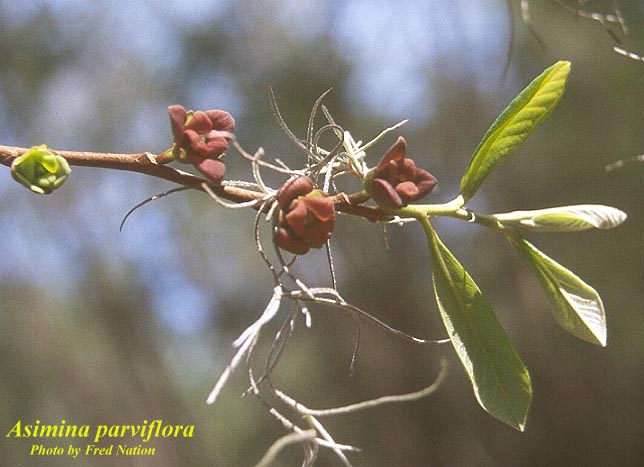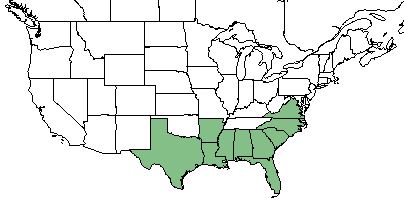Difference between revisions of "Asimina parviflora"
(→Ecology) |
|||
| Line 1: | Line 1: | ||
{{italic title}} | {{italic title}} | ||
| + | Common names: Smallflower pawpaw | ||
<!-- Get the taxonomy information from the NRCS Plants database --> | <!-- Get the taxonomy information from the NRCS Plants database --> | ||
{{taxobox | {{taxobox | ||
Revision as of 15:03, 5 June 2018
Common names: Smallflower pawpaw
| Asimina parviflora | |
|---|---|

| |
| Photo by the Atlas of Florida Plants Database | |
| Scientific classification | |
| Kingdom: | Plantae |
| Division: | Magnoliophyta - Flowering plants |
| Class: | Magnoliopsida - Dicots |
| Order: | Magnoliales |
| Family: | Annonaceae |
| Genus: | Asimina |
| Species: | A. parviflora |
| Binomial name | |
| Asimina parviflora (Michx.) Dunal | |

| |
| Natural range of Asimina parviflora from USDA NRCS Plants Database. | |
Contents
Taxonomic Notes
Synonyms: none
Varieties: none
Description
A. parviflora is a perennial shrub tree of hte Annonaceae family native to the southeastern United States. [1]
Distribution
A. parviflora is found in the southeastern United States, particularly in Florida, Georgia, South Carolina, North Carolina, Alabama, Mississippi, Louisiana, Arkansas, and Texas. [1]
Ecology
Habitat
A. parviflora is a deciduous shrub found in the Coastal Plain in the southeastern United States. [2]
Phenology
The A. parviflora flowers are the smallest in the assimina genus with 4-6 maroon flowers per branch. The flowers are in bloom from February to May depending on the year. [2]
Seed dispersal
The A. parviflora is pollinated by insects including the greenbottle fly and nitidulid beetles.[2]
Seed bank and germination
The fruit from A. parviflora requires an average of 3-4 months to mature and the number of seeds germinated is low compared to the initial population developed. [2]
Use by animals
A variety of flies are the most common visitor to the A. parviflora but they have not been traced to pollination, which is largely a result from beetles and the greenbottle fly.[2]